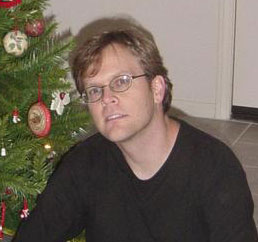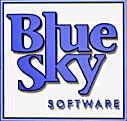During the heyday of the Genesis, a small developer by the name of BlueSky Software was quietly building a excellent reputation as one of the top software houses on the system. Established in 1988, it began working on Atari 7800 games, as well as the Lynx, XE, Commodore 64, and  Master System. This last console helped it establish a relationship with Sega that would bring both parties great success, and the Genesis would be home to a third of BlueSky’s catalogue. After releasing Starflight and Joe Montana Football in 1991, the group signed an exclusivity deal with Sega and moved to larger offices. A string of hits followed (among them VectorMan 1 & 2, Jurassic Park, and World Series Baseball), and it quickly established themselves as creators of solid titles with a high level of replayability. Sadly, BlueSky was one of the many companies that did not survive the transition to the 32-bit generation, and after releasing a total of seventeen games on the Genesis and two on the 32X, it experienced a series of setbacks (including questionable management and an exodus of employees) that eventually led to its closing in 2001.
Master System. This last console helped it establish a relationship with Sega that would bring both parties great success, and the Genesis would be home to a third of BlueSky’s catalogue. After releasing Starflight and Joe Montana Football in 1991, the group signed an exclusivity deal with Sega and moved to larger offices. A string of hits followed (among them VectorMan 1 & 2, Jurassic Park, and World Series Baseball), and it quickly established themselves as creators of solid titles with a high level of replayability. Sadly, BlueSky was one of the many companies that did not survive the transition to the 32-bit generation, and after releasing a total of seventeen games on the Genesis and two on the 32X, it experienced a series of setbacks (including questionable management and an exodus of employees) that eventually led to its closing in 2001.
During its stellar run on the Genesis it was the home to many talented artists and designers. One of its brightest stars was Richard Karpp, who had a hand in many classics and was the designer on BlueSky’s most memorable title, VectorMan. As both a designer and programmer, Karpp has lent his talents to many of the company’s Genesis titles, including Starflight and Jurassic Park. He has most recently been credited as one of the programmers for SCEA’s PlayStation 2 hit The Mark of Kri and its upcoming sequel Rise of the Kasai. He now lives in San Diego with his wife.
Sega-16: BlueSky Software has done some of the most polished games for the Genesis, including the phenomenal World Series Baseball, and it was quite prolific during the 16-bit era. What was the environment like at the company during this time?
Richard Karpp: There was definitely a period there when we were firing on all cylinders. After our initial attempts at Genesis games (I was lead programmer on Starflight and then a game called TechnoClash for EA and Keith Freiheit was lead programmer on Jurassic Park), we developed an engine that gave us decent sprite performance and a lot of flexibility with special effects. That engine allowed us to produce games more quickly, so we could do a lot more experimentation.
While working on those games, the atmosphere at the company was very exciting. Everyone was pulling together and trying to achieve the highest quality possible. We didn’t always succeed, but we knew that we were trying our best, and it was very rewarding.
It amazes me now that we put out so many games for one platform. These days, since a game takes eighteen months to two years to produce, we only get a chance to work on two or three games for each platform. Back then, I worked in some capacity on at least seven Genesis games.
Sega-16: VectorMan is a favorite among Genesis fans. How exactly did the concept come about?
Richard Karpp: We had just finished Technoclash and were wondering what to do next. There was a technique used in many games where individual sprites are tied together loosely to form a single character – it was widely used for things like dragon and snake bosses. A few of us came up with the idea of using that technique for the main character and all the characters in the game, if possible.
Once we had decided to use pieces to build characters, a programmer named Karl Robillard looked into using sphere sprites at various scales to create a 3D effect. It was very cool, so we planned to use only spheres to build our characters, and to use 3D for some of the gameplay. We even implemented this, but it didn’t work out very well. It looked okay, but we couldn’t achieve 60 frames per second, so it didn’t play well at all.
Instead of using only spheres, Karl developed a tool that used arbitrary sprites to build the character, along with a tweening animation system. We could achieve 60 frames per second with this, but we only had to store key frames, so the memory usage was reasonable. Once this was working, we knew it was the way to go.
 The game design concept came about when Mark Lorenzen, Jason Weesner, and I took a couple days away from the office to brainstorm. Eventually we hit on the idea of the futuristic robots, trash collection, etc. It was kind of a bizarre storyline, but we were really just looking for something to justify the gameplay that we envisioned: a fast platform game with multiple weapons that focused on immediate response to the controls and fluid animations. We then ran it by BlueSky’s creative director, Dana Christianson, and the game took off from there.
The game design concept came about when Mark Lorenzen, Jason Weesner, and I took a couple days away from the office to brainstorm. Eventually we hit on the idea of the futuristic robots, trash collection, etc. It was kind of a bizarre storyline, but we were really just looking for something to justify the gameplay that we envisioned: a fast platform game with multiple weapons that focused on immediate response to the controls and fluid animations. We then ran it by BlueSky’s creative director, Dana Christianson, and the game took off from there.
Later in the development cycle, we were having trouble deciding what VectorMan should look like. We had built much of the game, but the character hadn’t quite come together yet. So we had Rick Schmitz do a bunch of concept drawings and we eventually settled on one. That was pretty much the last piece to the puzzle.
Sega-16: The graphics effects in VectorMan are amazing. What special tricks, if any, were used to create them?
Richard Karpp: As I mentioned above, the main graphical motif in VectorMan was the “vector piece” animation system that allowed us to show extremely fluid movement by building characters from individual pieces.
A large percentage of the levels were designed around a “tech hook,” which was usually just some crazy idea that we thought we could get away with. Typically these involved creative use of the Genesis’ scrolling backgrounds – it was possible to specify a different scroll offset for each horizontal line, for example, which could give a parallax effect. We did this vertically in a few levels as well, even though vertical scrolling was limited to 8 pixel chunks. We used this for waterfalls, for example, and for conveyor belts.
The bosses were all designed around a tech hook as well. The first boss that you encounter in the game, which looks like a fighter plane, is actually implemented in the second scrolling playfield, and we used scroll offsets to make it look like it was rotating.
One of the more subtle effects we used was the highlight/shadow mode of the Genesis, which allowed the artists to use more on-screen colors than games typically used. Although this effect restricted the artists in some ways, I think it added a layer of polish to the game.
The big reason for the overall quality of the graphic effects is the hard work contributed by the artists: Amber Long and her crew of background artists did an amazing job, as did Marty Davis and his animators.
Sega-16: You weren’t involved in the development of VectorMan 2? Why not?
Richard Karpp: I got busy with other projects, so Keith Freiheit took over as lead programmer on VectorMan 2. I’ve worked with Keith for a long time (in fact, I’m working with him currently), so I trusted him to do the series proud.
Sega-16: What did you think of the VectorMan game being done for the Playstation 2? Did it look like it would have done the original justice?
Richard Karpp: I only saw the PS2 VectorMan game briefly once at E3, so I can’t comment on its quality. It seemed to be headed in a darker, somewhat more realistic direction, which doesn’t really appeal to me. I think the goofiness of the original games is part of their charm. However, I am disappointed that development was cancelled. Even if it wasn’t following in the footsteps of the original, it still looked like a good game that would’ve been fun to play.
Sega-16: Most games based on a movie license turn out pretty poor, but Jurassic Park was fun and retained the feel of the film. What was it like turning the cinematic blockbuster into a game? Did you ever feel pressured by the movie’s overwhelming success?
Richard Karpp: I played a minor role in the development of Jurassic Park, but I do remember a lot of pressure to get the game out in time for the movie’s release. I was also working on Technoclash at the time, so I had to put in a lot of hours to make sure I could handle my tasks on both games.
My recollections of the Jurassic Park project revolve around trying to get the game done extremely quickly. We knew that there was a lot riding on the game, because it would be getting a big marketing campaign, and we expected the movie to be huge, so we looked at it as a great opportunity to put BlueSky on the map. I guess it did the job, because it seems to be the game most people still remember.
Sega-16: Greg Johnson’s Starflight received an excellent port on the Genesis. Were any sacrifices made during the process due to the hardware?
Richard Karpp: Starflight was a great original game, and we tried our best to fit it all into a Genesis cartridge. I believe we were able to fit everything in the game because the star map and the planet geography were all procedurally generated. The hardest part was fitting in all the alien text, but I don’t remember removing anything.
Starflight was an enjoyable project because we were just getting familiar with the Genesis hardware, and it was nice to be able to port an existing game. We didn’t have to worry too much about game design issues, since they had already been worked out, so we could concentrate on learning as much as possible about the Genesis.
Sega-16: The game Technoclash was quite an unique experience. Were there ever any plans for a sequel?
 Richard Karpp: I’m surprised anyone remembers Technoclash – it seemed to disappear as soon as it was released, even though it was a cool concept and a decent game. I don’t recall any discussions of a sequel.
Richard Karpp: I’m surprised anyone remembers Technoclash – it seemed to disappear as soon as it was released, even though it was a cool concept and a decent game. I don’t recall any discussions of a sequel.
The game was designed by Novak from Zono Inc. and brought to BlueSky to develop. Novak programmed the AI in the game, and I programmed most everything else. I enjoyed the development of Technoclash quite a bit, because Novak is a very creative guy, and working on the game gave me a number of ideas that we used to really push the Genesis later on.
Sega-16: Have you ever felt the desire to revisit some of your past titles on a modern platform? If so, which ones?
Richard Karpp: I would love to resurrect VectorMan for one of the next generation platforms, but there doesn’t seem to be much interest in doing that. VectorMan is the game I’m the most proud of, mostly because I had my hand in many aspects of development, for better or worse.
I don’t want to dwell on the past, however. The Genesis was great and BlueSky Software was a fantastic place to work, but the industry has moved on and working on games is just as exciting today as it was back then.
Sega-16 would like to thank Mr. Karpp for his time and cooperation.

Recent Comments